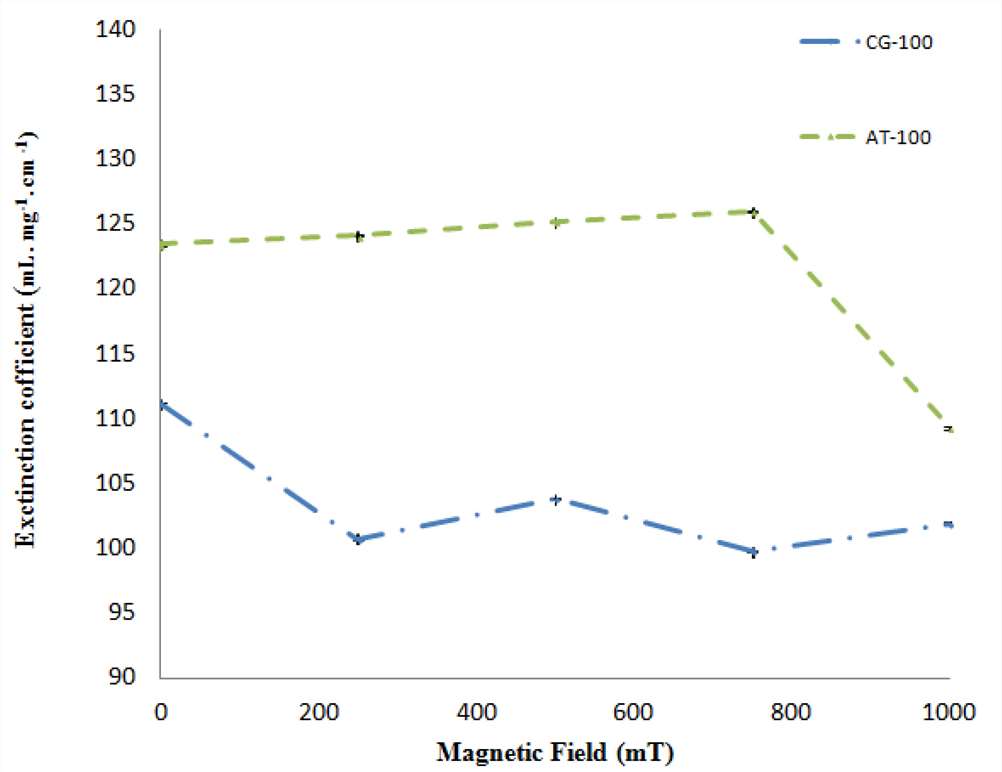Molar Extinction Coefficient Determination of DNA & RNA Drugs
Creative Proteomics is dedicated to providing top-notch DNA & RNA analysis services to support your research and development needs. Our expertise lies in the precise determination of the molar extinction coefficient (MEC) for DNA & RNA drugs, a crucial parameter for accurately quantifying and characterizing these biomolecules.
Introduction of DNA & RNA Drug Molar Extinction Coefficient
The DNA & RNA molar extinction coefficient (referred to as ε) is an essential factor utilized in assessing the concentration of DNA & RNA samples within a solution. This coefficient measures the absorption of light by DNA & RNA at a particular wavelength, providing researchers with accurate calculations of the DNA & RNA concentration present in the sample. The molar extinction coefficient is distinct for each DNA & RNA sequence and can be affected by various factors, including nucleotide composition, solvent conditions, and temperature.
 Fig. 1. Extinction coefficients of the two DNA samples. (Banihashemian S. M., et al., 2013)
Fig. 1. Extinction coefficients of the two DNA samples. (Banihashemian S. M., et al., 2013)
Our Molar Extinction Coefficient Determination Services
Creative Proteomics offers state-of-the-art technologies and expertise, we use advanced spectroscopic instruments to measure the absorbance of a sample at different wavelengths and calculate the MEC value from the spectral data.
Spectrophotometric Analysis
UV-Vis spectrophotometry is the most common method used to determine molar extinction coefficients of DNA & RNA drugs. Our services utilize high-quality spectrophotometers and advanced analytical techniques to acquire precise absorbance data.
Wavelength Optimization
etermining the optimal wavelength for measuring the absorbance is crucial for accurate molar extinction coefficient determination. Services provide wavelength scanning to identify the wavelength of maximum absorbance.
Quality Reports
Upon completion of the analysis, clients receive detailed reports containing the measured molar extinction coefficient values and associated experimental conditions. These reports help ensure traceability and compliance with quality standards.
Data Interpretation
our professionals will assist clients in interpreting the results and provide guidance on using the molar extinction coefficient data effectively in their research or applications.
Process of Molar Extinction Coefficient Determination
The process of determining the molar extinction coefficient of an DNA & RNA involves several steps, each aimed at achieving accuracy and reliability.
Sample Preparation
The first step involves preparing a purified sample of the DNA & RNA. Any impurities or contaminants must be removed, as they can affect the absorbance measurements.
Absorbance Measurement
UV-Vis spectrophotometry is used to measure the absorbance of the DNA & RNA sample at multiple wavelengths. The spectrophotometer scans a range of wavelengths to identify the one with the highest absorbance.
Data Analysis
The obtained absorbance data is analyzed to determine the wavelength of maximum absorbance. The molar extinction coefficient is then calculated using the Beer-Lambert law, which relates absorbance, molar concentration, and the path length of the sample cell.
Quality Assurance
To ensure accuracy, the process often includes quality control measures, such as using reference standards with known molar extinction coefficients and validating the instrument's performance.
Report Generation
After completion of the analysis and data interpretation, a comprehensive report is generated, providing the molar extinction coefficient values and relevant experimental details.
Molar Extinction Coefficient Determination Application Fields
The knowledge of DNA & RNA molar extinction coefficient finds application in various fields, spanning research, diagnostics, and industrial processes.
- Antisense Therapy and RNA Interference.
- Quantification of DNA & RNA.
- Purity Assessment.
- Quality Control in DNA & RNA Synthesis.
- Structural Characterization.
- Biophysical Studies.
Creative Proteomics is dedicated to providing top-notch DNA & RNA analysis services to support your research and development needs. If you are interested in our services, please contact us for more detailed information. Our experts will be happy to answer any questions related to MEC assays and provide practical advice to ensure that our clients achieve the best possible results during their research.
Reference
- Banihashemian S. M.; et al. (2013). Optical characterization of oligonucleotide DNA influenced by magnetic fields. Molecules. 18(10):11797-11808.
For research use only, not intended for any clinical use.

 Fig. 1. Extinction coefficients of the two DNA samples. (Banihashemian S. M., et al., 2013)
Fig. 1. Extinction coefficients of the two DNA samples. (Banihashemian S. M., et al., 2013)